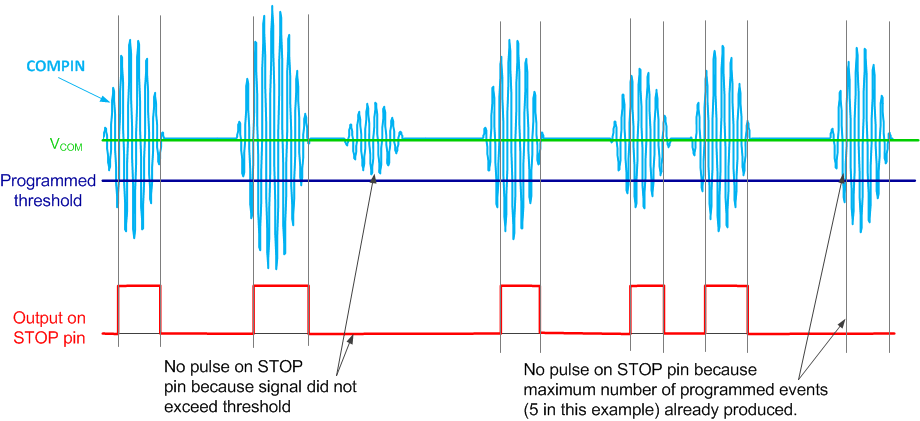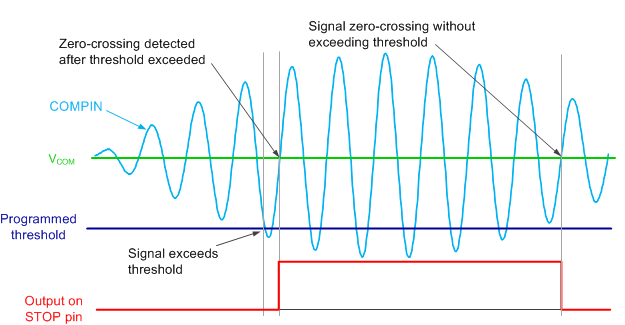SNAS648C October 2014 – February 2023 TDC1000
PRODUCTION DATA
- 1 Features
- 2 Applications
- 3 Description
- 4 Revision History
- 5 Pin Configuration and Functions
- 6 Specifications
- 7 Parameter Measurement Information
-
8 Detailed Description
- 8.1 Overview
- 8.2 Functional Block Diagram
- 8.3 Feature Description
- 8.4 Device Functional Modes
- 8.5 Programming
- 8.6 Register Maps
- 9 Application and Implementation
- 10Device and Documentation Support
- 11Mechanical, Packaging, and Orderable Information
Package Options
Mechanical Data (Package|Pins)
- PW|28
Thermal pad, mechanical data (Package|Pins)
Orderable Information
8.4.4.2 Multiple Echo Receive Mode
The Multiple Echo mode is intended for use in level sensing applications and distance/displacement measurements in which multiple echoes (burst) are received. In this condition, each received echo group will be treated as a single pulse on the STOP pin. Up to 7 STOP pulses can be generated based on the value of the NUM_RX field in the CONFIG_1 register. Multi echo mode can be enabled by setting the RECEIVE_MODE bit to 1 in the CONFIG_4 register. #SNAS6484660 shows a representation of multiple echo STOP pulse generation.
 Figure 8-20 Multiple Echo Receive Mode (5 STOP Events)
Figure 8-20 Multiple Echo Receive Mode (5 STOP Events)The rising edge of a STOP pulse is generated by a zero-crossing event. As in the Single Echo Receive Mode, the threshold comparator qualifies the next zero-cross after an RX amplitude smaller than the programmed threshold voltage is detected. The STOP pulse will extend until a zero-cross after the RX amplitude is no longer smaller than the threshold voltage (see #SNAS6488072).
 Figure 8-21 Multiple Echo Receive Mode (Zoom-in)
Figure 8-21 Multiple Echo Receive Mode (Zoom-in)If the number of expected pulses programmed in NUM_RX is not received or the time-of-flight operation times out, the TDC1000 will indicate an error condition in the ERROR_FLAGS register and will set the ERRB pin low.